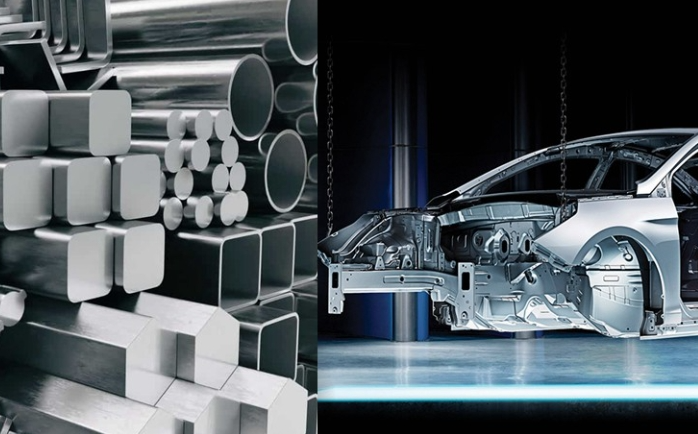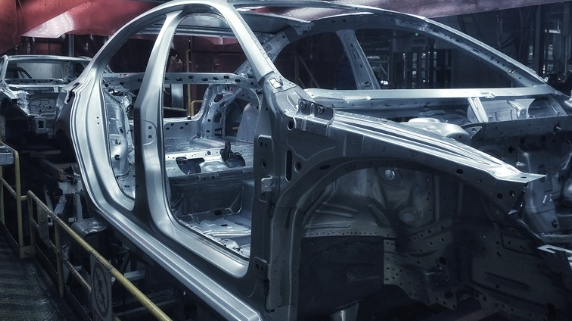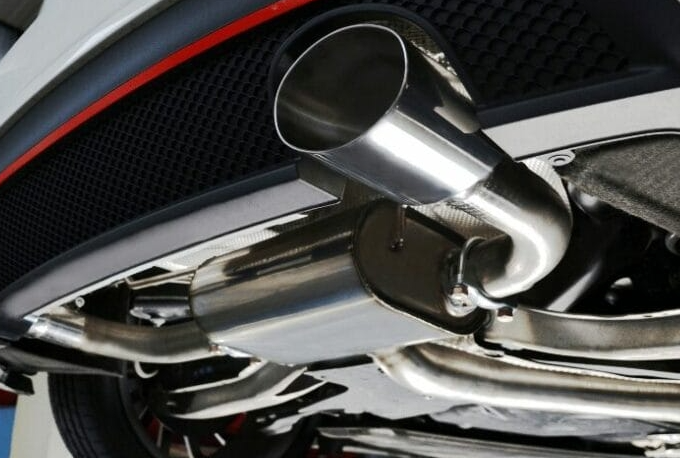Ever asked yourself why cars today last so long and work well even in bad weather? It’s all about what they’re made from. Tool steel and galvanized steel are key in car-making. Each has its own benefits. Tool steel gives cars strength and exact shapes. Galvanized steel stops rust and saves money. I’ve noticed these two types of steel work together to build the cars we use daily. In my experience, this mix of materials is what makes our vehicles so dependable.
Introduction
Car makers rely on good materials to build cars that work well, last long, and don’t waste fuel. I find tool steel andgalvanized steelto be two of the most important materials in car making. Each has special qualities for different car parts.
Tool steel is hard, tough, resists wear, and handles heat well. Car makers need these qualities to make precise parts.Robot tools made from tool steel last through millions of uses without losing accuracy. High-speed steel (HSS) cutting tools cut engine parts at speeds up to 600 feet per minute. The car industry uses millions of tons of tool steel each year for parts that need to be strong and long-lasting.
Galvanized steel has a zinc coating that stops rust and corrosion. Car makers use it for outer body panels, undercarriage parts, doors, and fuel tanks. I’ve seen how this steel offers great protection while keeping costs down and helping the environment. It makes cars safer by strengthening frames that protect during crashes. Car makers often choose grades like DX51D and Z275 for panels and supports. Each car needs about 900 kg of steel, and much of that is galvanized steel to fight rust and weather damage.
Tool steel and galvanized steel work together in modern car making. From my perspective, they ensure both precise parts and strong, safe car structures.
Tool Steel in the Automotive Field
Key Properties of Tool Steel in Automotive Applications
I’ve found tool steel to be vital in the car industry because of these key features.It stays sharp and resists damage during machining, stamping, and die casting. This makes parts last longer in tough conditions.It keeps its strength at high temperatures. This works well for parts that get hot.It doesn’t crack under pressure. This is perfect for high-stress car parts.Some types, like H13, resist rust and oxidation, even when hot.
Applications of Tool Steel in the Automotive Industry
| Application | Parts/Components | Steel Types Used | Key Features/Benefits |
|---|---|---|---|
| 1. Making Engine and Transmission Parts | Gear cutters, engine blocks, crankshafts, camshafts, gears, housings | M2 high-speed steels, H13 hot work steels | Resists wear and heat; ensures durability in high-stress environments. |
| 2. Die Casting and Injection Molding | Transmission cases, drivetrain parts, plastic components | H13 (hot work), D2 (cold work), rust-resistant grades | Precision molds; withstands high temperatures and repeated use for consistent production. |
| 3. Pressing and Stamping | Chassis parts, body panels, structural supports | D2 cold work tool steel | Ideal for repeated, high-pressure forming operations; maintains structural integrity. |
| 4. Robotic Production Lines | Grippers, pins, clamps | — | Ensures accuracy, wear resistance, and longevity in continuous manufacturing processes. |
| 5. Precise Cutting and Shaping | Axles, gears, shafts, cylinder heads, light body panels | High-speed steels, cobalt alloys | Retains sharpness for intricate machining and detailed component shaping. |
| 6. High-Heat Applications | Exhaust parts, turbochargers | Chromium/molybdenum tool steels | Maintains strength and resists deformation under extreme heat and thermal cycling. |
Industry Insights
I’ve watched tool steel become the backbone of the car industry. This strong material handles the harsh forces of manufacturing without giving in. When I touch well-formed vehicle parts, I feel the precision that tool steel delivers. It impresses me how it stands up to extreme heat during production. This strength keeps its shape even at high temperatures—which I find essential for making modern car designs real. Based on my experience, no other material matches tool steel’s mix of strength and precision when building cars.
The tool steel market will grow from USD 7.45 billion in 2025 to USD 11.69 billion by 2033. This growth comes from its role in cars and other heavy industries.Each year, car makers use millions of tons of tool steel. This shows how important it is in modern manufacturing.North America makes many cars and relies on tool steel for exact engineering and large-scale production.
Galvanized Steel in the Automotive Field
I’ve found that galvanized steel is a hidden champion in car making – it truly protects your vehicle’s structure. When I touch a good car panel, I feel the strength that galvanized steel gives. From what I’ve seen, no other material matches its mix of toughness, rust protection, and good price. I want to share the main uses and types of this amazing metal in our everyday cars.
Composition and Types of Galvanized Steel
| Composition and Types of Galvanized Steel | Description | Characteristics and Applications |
|---|---|---|
| Hot-Dip Galvanized Steel | Coated by dipping steel into molten zinc. | Creates a thick, tough coating. Perfect for parts exposed to harsh conditions. |
| Electro-Galvanized Steel | A thin, even zinc layer applied with electricity. | Has a smooth surface finish. Great for parts that need to look good. |
| Galvannealed Steel | Made by hot-dip galvanizing and then heating the steel. | Paint sticks better to this type. It’s also easier to weld, which speeds up production. |
Key Applications in the Automotive Industry
| Application Category | Parts/Components | Steel Type | Key Features/Benefits |
|---|---|---|---|
| Body Components | Roofs, doors, fenders, trunk lids | Galvanized steel | Resists corrosion; maintains structural integrity in harsh weather. Used in ~80% of a car’s “body-in-white”. |
| Structural & Safety Features | Chassis, frame, side-impact beams | Galvanized steel | Combines strength and rust resistance for stability, crash energy absorption, and long-term durability. |
| Exhaust Systems | Exhaust pipes, mufflers, heat shields | Galvanized steel | Withstands high temperatures and corrosive exhaust gases for extended lifespan. |
| Underbody Protection | Underbody panels, splash guards | Galvanized steel | Shields against salt, water, and road debris, preventing corrosion and extending vehicle longevity. |
| Lightweight Designs | Structural reinforcements, lightweight panels | Advanced galvanized steel | Reduces vehicle weight while maintaining strength, improving fuel efficiency and lowering emissions. |
Regional Adoption Rates
In the EU and US, about 70% of cars use galvanized steel. This makes them last longer and resist rust better.
In India, just 30% of cars use galvanized steel. This shows why some cars there don’t last as long or resist rust as well.
Comparison: Tool Steel vs Galvanized Steel in Automotive
Cost and Maintenance
Tool Steel costs more upfront because of its mix of metals and how it’s made.It saves money over time since it lasts longer and resists wear.
Galvanized Steel costs less at first because it’s simpler to make.It needs fixing if the zinc coating gets damaged during welding.
Mechanical Properties
Tool Steel is very hard and resists wear, making it great for precise tools. It lacks bend and flex, which limits where we can use it.
Galvanized Steel can offers good mix of strength and flex. I recommend it for parts that face weather and road conditions, such as car body parts.
Market Trends and Growth
Tool Steel will grow at 6% yearly from 2024 to 2030. More demand exists for exact car parts worldwide.More car makers choose Galvanized Steel for light vehicles. Its strength-to-weight ratio supports green efforts in car making. I’ve noticed it helps cars last longer by fighting rust.
Examples and Use Cases
Tool Steel found in high-end car parts like wheel bearings and brake systems. Also used for making dashboard molds and other exact parts.
Galvanized Steel used in car frames, exhaust systems, and under-body parts. From my experience, it works well in harsh weather and road salt.
Conclusion
Looking at tool steel and galvanized steel in cars, I see each has its own key role. Tool steel makes the exact parts like engine blocks, gears, and molds because it’s so hard and resists wear. From my experience, H13 tool steel works best for die casting. D2 tool steel does better for stamping and cold-forming.
Galvanized steel creates strong, rust-proof car structures. It makes up about 80% of vehicle bodies and is vital for body panels, chassis, and frames. I’ve found that galvannealed steel gives car makers the right mix of rust protection while still taking paint well and being easy to weld.
When car makers mix tool steel‘s strength with galvanized steel’s rust protection, they build cars that cost less, last longer, and perform better. I believe these two materials are the backbone of today’s car engineering and will drive future advances.
Expert Opinion:
“In my 25 years working with car materials, I’ve seen how tool steel and galvanized steel form a key partnership in car making. Tool steel gives us the exact shapes and lasting quality we need for our factory equipment. Galvanized steel fights rust and keeps the car strong. I find it amazing how these materials have changed to meet tougher standards for car life, safety, and green goals. As we build greener cars, these metals show great flexibility through new metal-working methods that cut weight but keep or boost performance. I believe future car making will bring new ideas for both materials, but their basic teamwork will stay vital.”
———— Dr. Michael Henderson , Chief Materials Scientist with 25 years of experience in automotive metallurgy and Former Head of Materials Research at Global Automotive Technologies





